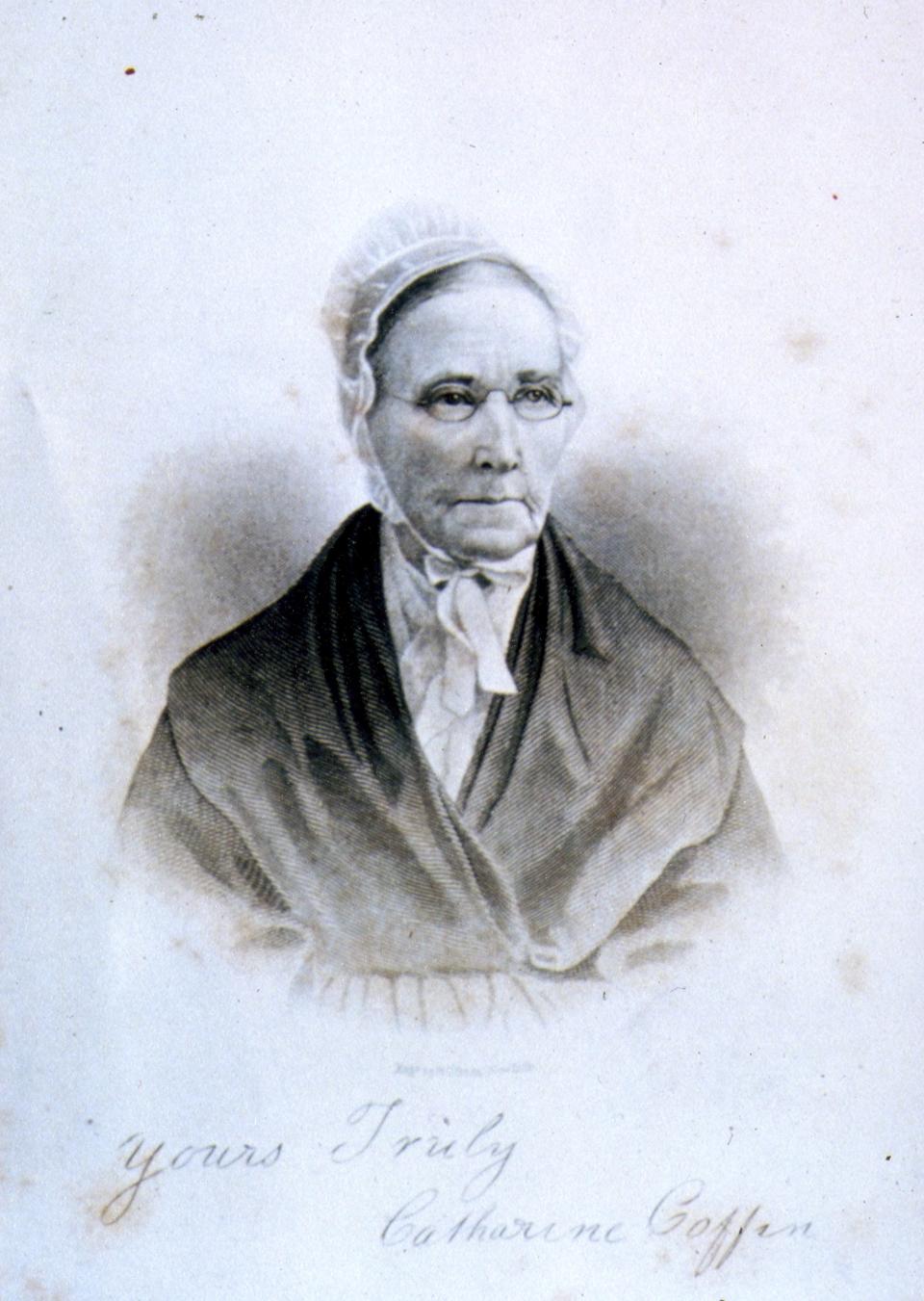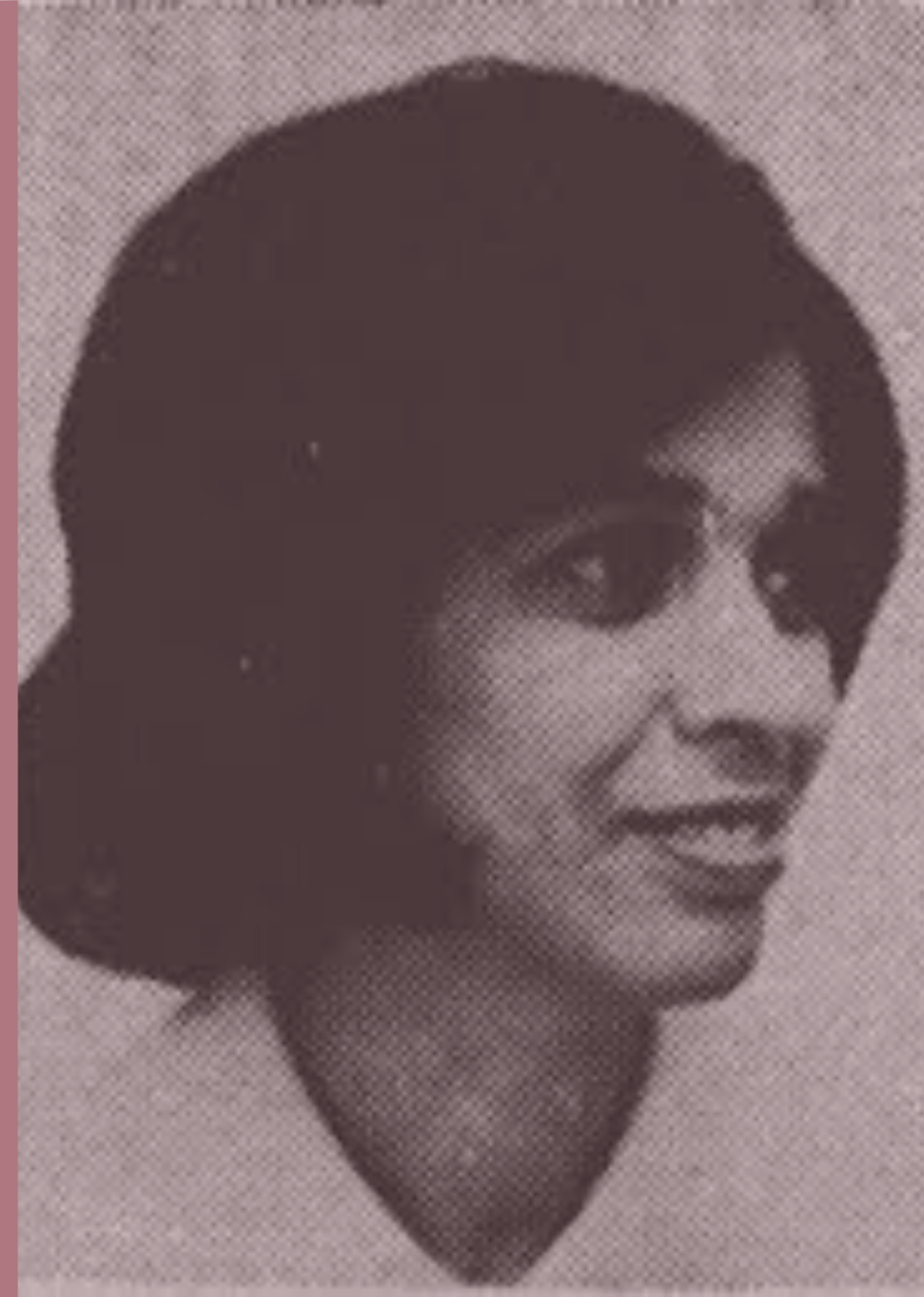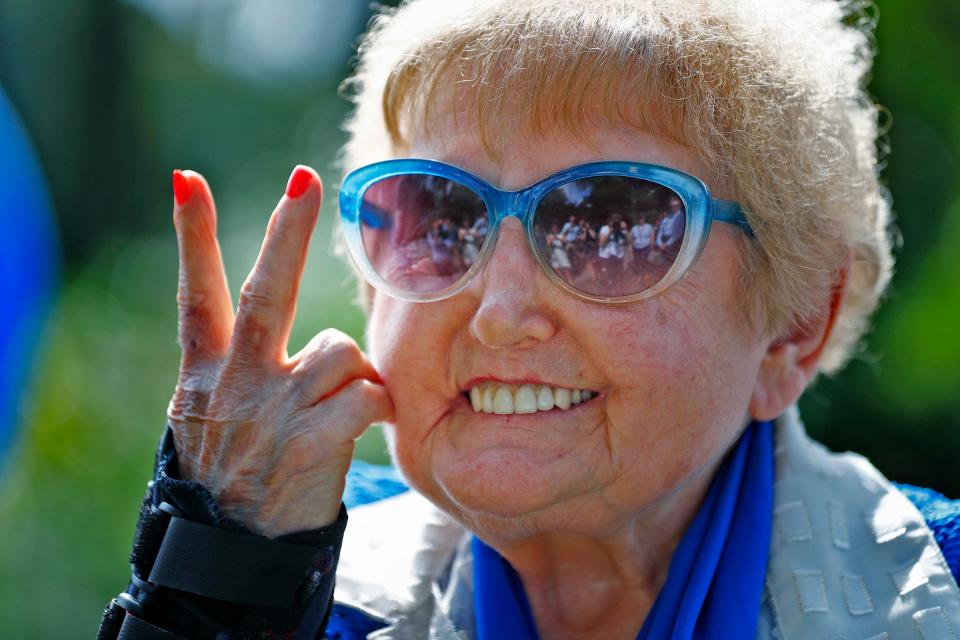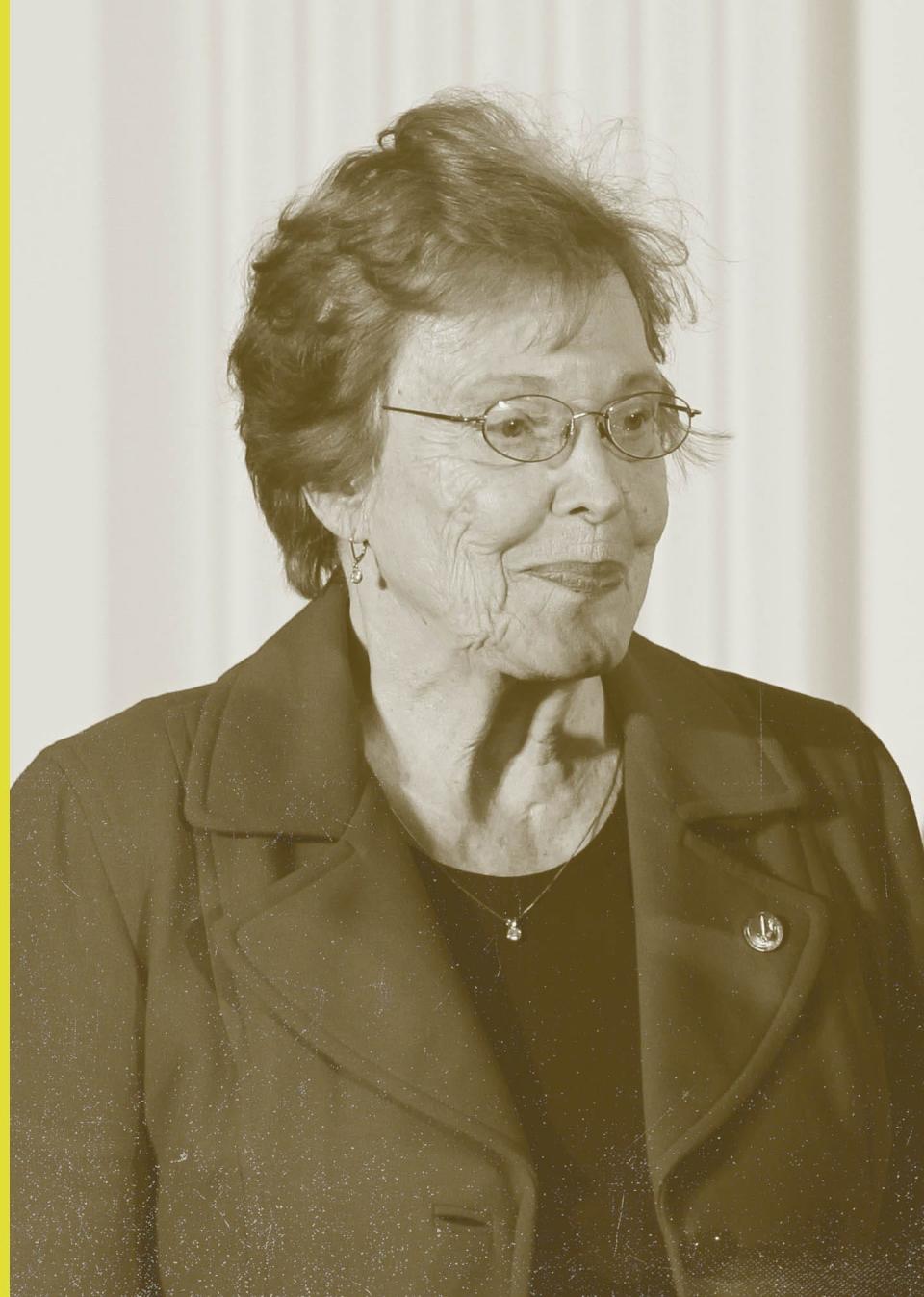15 badass Hoosier women who made waves in civil rights, science, arts and more
- Oops!Something went wrong.Please try again later.
- Oops!Something went wrong.Please try again later.
- Oops!Something went wrong.Please try again later.
Take your pick of science, politics, civil rights, music — any subject, really — and you'll find the fingerprints of historic Hoosier women. Some were outspoken — at pulpits, rallies and courts. Others took a quieter route, in sewing circles and labs.
The true number of women whose contributions have shaped Indiana, and, by extension, the country, is of course too great to count. So we'll start here with 15 who helped achieve voting and civil rights, who battled unfair housing policies, who fought for the U.S. during wartime, who embodied resilience.
Catharine Coffin: abolitionist on the Underground Railroad
1803-1881
With her husband Levi Coffin, Catharine ran what became known as the Grand Central Station of the Underground Railroad in what's now Fountain City, according to the Indiana State Museum. The Quaker couple gave those escaping enslavement a place to sleep, food and resources — including clothing crafted by Catharine and her sewing society — to fortify them before they continued north.

The couple's Federal-style home — complete with secret hideaways — still stands and is available to tour as one of the state museum's historic sites. Catharine herself will be featured on a new U.S. Post Office stamp as part of a series that honors those who helped operate the Underground Railroad.
Helen Gougar: women's suffrage advocate and writer
1843-1907
Nineteenth-century society refused Gougar the right to vote, but she forged her legacy by pushing forward anyway. She originally arrived in Lafayette to teach public school in 1860 and married an attorney before becoming a lecturer and newspaper columnist touting women's rights and temperance.
In 1894, Gougar filed suit against the Tippecanoe County Election Board for $10,000 in damages for preventing her from voting, according to Lafayette Journal & Courier archives. In 1897, she won a fight to argue in front of the Indiana Supreme Court, where she communicated her views on women's suffrage.
Neither situation ended in a victory while Gougar was alive, but her work fed the the next generation of suffragists who finally obtained the right to vote — just more than a decade after she died.
Albion Fellows Bacon: housing crusader
1865-1933
After two of Bacon's children developed scarlet fever, the Evansville mother of four went first to their schools and then the city's riverfront slums, looking for the source of their infection.
Her tour of the tenements opened her eyes to the horrific living conditions of her city's poor. Bacon drafted the first of many bills in 1908 to regulate such housing. Bacon was later instrumental in the passage of a law allowing for the condemnation of unsafe buildings statewide. She extended her efforts to juvenile justice, child welfare and city planning.
Lovina McCarthy Streight: Civil War nurse
1830-1910
When Lovina McCarthy Streight's husband, Abel, became commander of the 51st Indiana Volunteer Infantry, she would not hear of languishing at home. Instead, she and the couple's young son went with him. Streight nursed the wounded, eventually earning her the title "The Mother of the 51st." Confederate troops captured her three times, twice exchanging her for prisoners. The third time, she brandished a gun she had stashed inside her skirts.
The couple survived to return to their home in Indianapolis, where Streight organized reunions of the regiment. After her husband died, Streight buried him in her front yard, to her neighbors' dismay. Abel was exhumed and reburied at Crown Hill Cemetery.
When Streight died, she was buried alongside her husband in a funeral that included full military honors and about 5,000 mourners, including survivors of the 51st.
Madam C.J. Walker: haircare and beauty mogul
1867-1919
Born Sarah Breedlove to sharecroppers in Louisiana, Walker became America's first self-made female millionaire, according to the Guinness Book of World Records. She obtianed her famous moniker from her husband Charles J. Walker, a St. Louis newspaperman, and became became synonymous with Black hair care.
She moved to Indianapolis, where she bought a home adjacent to a laboratory where she made her products. A factory and training school followed.
After Walker moved to Indianapolis, she donated $1,000 to build a YMCA that served Black guests. Throughout her life, Walker supported other civil rights efforts, including donating $5,000 to the NAACP's anti-lynching efforts.
May Wright Sewall: suffragette
1844-1920
Sewall founded a female counterpart to the Indianapolis Classical School for Boys (started by her second husband) in 1882 and insisted that the curriculum for girls mirror that for boys. That meant that the girls took physical education at a time when it was thought to be improper for young ladies to engage in physical activity.
In 1878, she helped found the Indianapolis Equal Suffrage Society and campaigned for women's suffrage in Indiana. She later worked alongside Susan B. Anthony and Elizabeth Cady Stanton. She also chaired the National Woman Suffrage Association.
Locally, Sewall founded the Propylaeum, a social and cultural club for women, and the Art Association of Indianapolis, the predecessor to the Indianapolis Museum of Art. In 1920, she published a book called "Neither Dead Nor Sleeping," in which she talked about communicating with her dead husband.
Flossie Bailey: civil rights activist
1895-1952
Flossie Bailey was known in Marion as a voice for racial justice. In the 1920s, Bailey, the wife of a doctor, helped organize the local and state offices of the NAACP. In 1930, she headed up the local chapter, which had almost 100 members.
So when she started to hear talk that three jailed teenagers were going to be lynched, she leapt into action. She tried to get the teens, who were suspected of murdering a white man and raping a white woman, moved for their protection. Her efforts were to no avail, and two of the teens were killed.
After the lynching, Bailey wanted to see the lynchers brought to justice. She lobbied national NAACP leaders to take up the cause and eventually two men were brought to trial, though the all-white, all-male jury acquitted them.
Bailey's family endured harassment, but she persevered, organizing a successful effort to pass a state law the next year that said any sheriff who allowed one of his prisoners to be lynched would lose his job.
Vivian Carter: recording executive
1921-1989
Carter made her name as a disc jockey at a Gary radio station and owned a record store with her husband, James Bracken. The two founded a record company of their own, Vee Jay Records, using $500 borrowed from a pawnbroker.
The company signed blues, doo-wop and jazz musicians. One of the first songs they recorded made it to the Top 10 of the national rhythm and blues charts. Pre-Motown, Vee Jay Records was the most successful Black-owned record company, recording hits with Little Richard, the Spaniels and the Four Seasons, among others.
In the early 1960s, it signed the Beatles, not yet popular in the U.S., but the early releases didn't immediately take off. When the Beatles did soar to U.S. stardom, Vee Jay found itself mired in an expensive legal battle with Capitol Records for distribution rights.
Carter eventually returned to hosting her own radio show in Gary.
Wilma Rudolph: Olympic icon and mentor
1940-1994
Rudolph became the first American woman to win three track and field gold medals at a single Olympics — a feat that initially appeared impossible, given her circumstances. As a child in Tennessee, she endured multiple illnesses, including polio, and her left leg was paralyzed. With determination and her family's support, Rudolph went from limping to becoming a speedy runner.
After she arrived in Indianapolis in 1982, she founded the Wilma Rudolph Foundation to mentor young athletes. She directed DePauw University's women's track program and was a consultant to the school's president as the school worked to become more diverse.
Dorothy Stratton: Advocate for women service members
1899-2006
Stratton became Purdue's first full-time dean of women in 1933, and thanks to her recruiting efforts, the number of women at the school went from 500 to more than 1,400. She also helped bring aviatrix Amelia Earhart to West Lafayette as a career counselor.
In 1942, she organized and became director of the Women's Reserve of the Coast Guard and received a Legion of Merit medal in 1946.
After the war, Stratton worked for the International Monetary Fund and served as executive director of the Girls Scouts of the USA. After Stratton's death, first lady Michelle Obama christened a Coast Guard cutter with her name in her memory.
Margaret Ray Ringenberg: aviator
1921-2008
Once a young Ringenberg rode in a plane near her family's Adams County home, her destiny was set. She later attended flight school and completed her first solo flight at the age of 19.
In 1943, she joined the Women Airforce Service Pilots, or WASPs, ferrying planes around the U.S. during WWII and then moved to Fort Wayne and gave flying lessons. When Japan surrendered in August 1945, a local radio station hired her to drop 56,000 pamphlets, heralding the war's end, on the city.
Over the years, she won more than 125 racing medals and raced around the world. At the age of 84, she competed in the 29th Annual Air Race Classic, in which pilots fly more than 2,300 miles over four days.
Ringenberg died in a hotel room at age 87, on her way to an air show.
Mari Evans: poet, writer and activist
1919-2017
Part of the Black Arts Movement in the 1960s and 1970s, Evans focused much of her work on Black pride and resilience. She's especially known for her books, including "I Am a Black Woman," and for projects like her TV program, "The Black Experience," and "River of My Song," which uses poetry, dance and music.
She also was an activist in the community, protesting the death penalty and demanding prison reform. For Evans, all of this was part of her artistic identity — she called herself a "political writer," according to the Encyclopedia of Indianapolis.
A mural of her stands near Michigan Street and Massachusetts Avenue.
Daisy Riley Lloyd: community activist and politician
1923-2019
Lloyd shattered glass ceilings and toppled barriers throughout her life. In 1964, she became the first Black woman elected to the Indiana General Assembly. Shortly after, she was diagnosed with breast cancer and shared her fight publicly in a televised broadcast from her hospital room.

After witnessing unfair housing practices and displacement caused by highway construction, Lloyd began a career in real estate and helped remove obstacles for Black buyers to become homeowners. She found herself advising clients personally, which prompted her next chapter — earning advanced degrees from Christian Theological Seminary/Butler University and Purdue University and then providing counseling and teaching at IUPUI.
Lloyd also helped found the Butler Tarkington Neighborhood Association, was a member of the NAACP and served on several arts and civic boards. Three governors gave her the Sagamore of the Wabash Award.
Eva Mozes Kor: survivor, teacher and advocate
1934-2019
Kor is known for her choice to forgive after experiencing the depths of evil. Taken from her tiny Romanian village to Auschwitz at age 10, she and her twin sister Miriam were forced to undergo debilitating medical experiments under the Nazi "Angel of Death" Dr. Josef Mengele.

After moving to Terre Haute in 1960 with her husband, also a Holocaust survivor, Kor contended with anger and bitterness as she continued to experience antisemitism. And then she decided to forgive those who had committed the atrocities against her, finding personal liberation and power in the process. Kor taught groups about the Holocaust, led trips back to Auschwitz and founded the CANDLES Holocaust Museum and Education Center.
Helen Murray Free: trailblazing scientist
1923-2021
In 1956, Free revolutionized many self-testing systems for diabetes, pregnancy and disorders by developing convenient and efficient dip-and-read strips that did not require the long lab process.

While a student at the College of Wooster, she had switched her major to chemistry when jobs opened up for women during World War II. After graduating with honors, she applied for an opening in the biochemistry research group led by Alfred Free at Miles Laboratories in Elkhart. He would become her husband and research partner.
Helen Murray Free also wrote textbooks, promoted science education and was inducted into the U.S. National Women's Hall of Fame.
IndyStar's Shari Rudavsky and the Evansville Courier & Press contributed to this report.
Looking for things to do? Our newsletter has the best concerts, art, shows and more — and the stories behind them
Contact IndyStar reporter Domenica Bongiovanni at 317-444-7339 or d.bongiovanni@indystar.com. Follow her on Facebook, Instagram or Twitter: @domenicareports.
This article originally appeared on Indianapolis Star: 15 historic Hoosier women who who made big contributions

